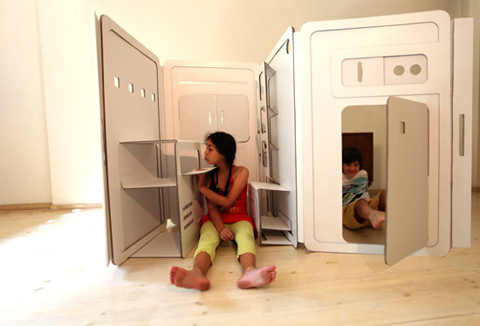Cardboard Play House for KidsDesigner Liya Mairson, a graduate from Shenkar Institute for Engineering and Design, has developed the project “my space” that is specifically designed for children 3-6 based around a pop-up technique. The cardboard folding play area is perfect for small apartments enabling the kids to play within the safety of their house. 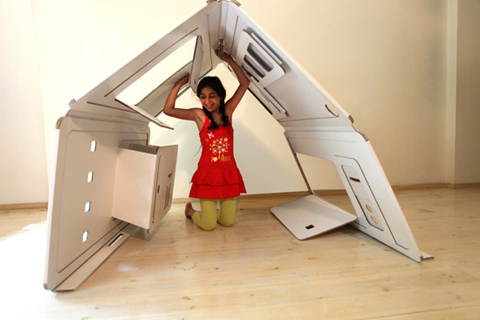 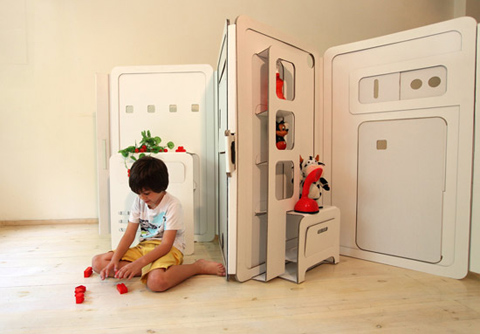 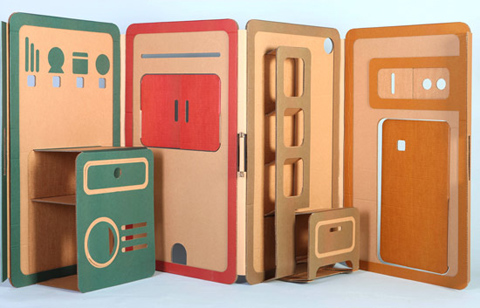 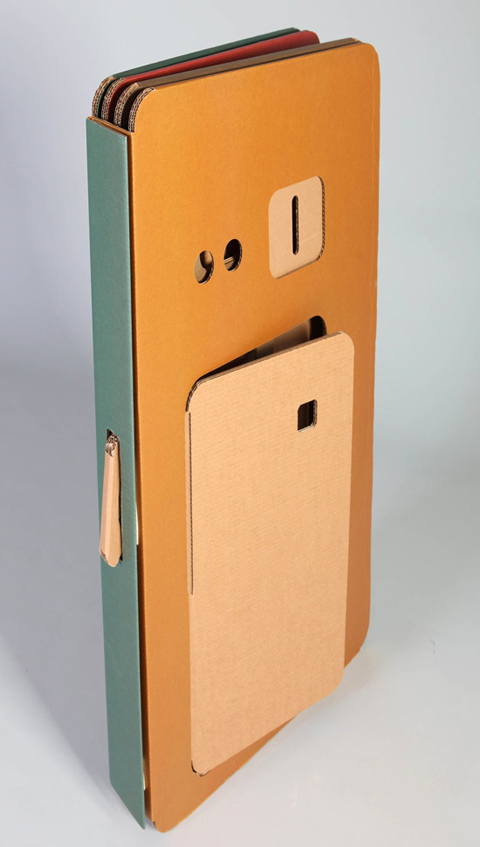 |
2010年9月29日 星期三
Cardboard Play House for Kids
[Eco News]PVC保鮮膜 2013年起擬禁用
PVC保鮮膜 2013年起擬禁用
保鮮膜應用廣泛,家庭主婦都少不了它,但材質為PVC(Polyvinylchloride,聚氯乙烯)的保鮮膜含塑化劑,黏性雖好,微波或包裝食物時卻容易溶出,焚化時可能產生戴奧辛。環保署預定自一○二年起禁止PVC及聚偏二氯乙烯(PVDC)保鮮膜製造、輸入,並禁止零售販賣。
環保署廢管處科長許智倫表示,未來若有量販店、超市、便利商店等零售業者販賣給一般消費者,將依違反廢棄物清理法第五十一條處以新台幣一千二百元罰鍰,製造、輸入供零售業販賣則處六萬至三十萬元罰鍰。
PVC含塑化劑及重金屬
看守台灣協會秘書長謝和霖表示,PVC是五大泛用塑膠(PE、PVC、PP、PS、ABS)中唯一的含氯塑膠。PVC如果沒有添加塑化劑,跟水管一樣是硬邦邦,因此添加塑化劑改變柔軟度。另外PVC的熱安定性很差,為避免PVC產品在太陽高溫照射下裂解,還必須添加安定劑,通常為鉛、鎘、鋅等重金屬。
環保署廢管處長吳天基表示,近年來含氯塑膠生產、使用與廢棄後所可能產生危害性,引起各界關注,今年立法院也通過決議,要求環保署提出禁用規劃,禁用方向早已確定,但業者意見多,實施期程尚未確定。
謝和霖表示,PVC保鮮膜隨處可見,路旁的西瓜攤老闆將鮮紅欲滴的西瓜包上一層薄薄保鮮膜;餐廳服務生端來滿滿的一大碗雞湯,為怕溢出,雞湯上包上一層薄薄的保鮮膜,幾乎都是PVC材質。大賣場各種生鮮蔬果、雞鴨魚肉幾乎也都用PVC包裝,環保署只禁家用保鮮膜不夠,連商用保鮮膜都應禁止,PVC有適當的替代品PE(聚乙烯),對消費者不會產生影響。
環團指PE可取代PVC
塑料公會總幹事王慶華反彈說,立法禁用PVC、PVDC保鮮膜製品,很沒有道理,全球只有台灣這樣做。環保團體質疑PVC加熱會產生有害人體物質,主因是PVC內的氯乙烯單體VCM,但國際上對PVC內含VCM標準是十PPM以下,台灣是一PPM以下,非常嚴格。而台灣焚化爐溫度是攝氏一千度,PVC在八百五十度就會完全燃燒,不會產生戴奧辛。
環署廢管處科長許智倫表示,韓國自二○○一年起禁止使用PVC收縮膜,二○○四年針對蛋、油炸食品、漢堡、三明治等禁止使用PVC烯材料包裝,美國很多州也研擬禁用。
業者反彈:禁用沒道理
王慶華則說,PVC保鮮膜延展性、黏性都較PE保鮮膜更好,貿然禁用對許多賣場業者會造成很大困擾。
環保署估計禁用PVC的包鮮膜後,每年可以減少使用三千兩百公噸含氯家用保鮮膜,相當於每年減少一千五百五十五公噸的氯進入焚化爐,約佔家戶垃圾焚化處理量中三成含氯量。
Green Businesses Get Anti-Greenwashing Packaging Guidelines
Green Businesses Get Anti-Greenwashing Packaging Guidelines
by STEPHANIE ROGERS · VIEW COMMENTS

For every company that’s intentionally trying to manipulate consumers with vague or misleading green claims, there are many more businesses who are trying to do the right thing, but are sort of confused about what they should say. Enter the new guidelines to packaging sustainability claims developed by Greener Package, which should clarify some important points.
These anti-greenwashing guidelines will be used to review claims made by suppliers who submit their product data to the Greener Package Database.
From Earth 911:
“Consumer demand for sustainably produced products is a key driver in promoting progress at the manufacturing level,” said Victor Bell, EPI’s CEO, “Third-party validation is critical in combating greenwashing, which—if left unchecked—could erode consumer confidence and ultimately the public’s interest in buying sustainable products and packaging.”The database offers companies that manufacture packaged goods a means to research and compare sustainable packaging materials, containers and suppliers. The data will also feed Walmart’s Packaging Scorecard system.Submitting a company or material to the database utilizes a “middle ground” developed by Greener Package, where companies submit to a voluntary, third-party review.“In effect, the reviewer serves as a neutral third party making a good-faith effort to review backup documentation from suppliers to compare to a common guideline in order to save the users of the database time from having to do the same for each listing each time they search,” according to Greener Package.
A service like this is invaluable, especially when fear of greenwashing accusations scares some businesses away from even trying to be greener in the first place. The cost for review will be between $110 and $330, well worth the investment to provide both businesses and consumers with some peace of mind.
Nokia Packaging
Packaging
All packaging uses energy and resources in its manufacture. We aim to reduce this environmental footprint by minimizing package sizes and by using materials that are easy recyclable – thus saving virgin material wherever possible. Pack sizes are also important because they influence the energy per product used in transport.
We use a wide range of packaging, both for materials and equipment that we purchase from suppliers, and for delivering products to customers. It ranges from small cardboard boxes for parts to packaging for base station cabinets and antennas.
Transport and packaging requirements are considered early in the product design process. A dedicated team is responsible for all packaging design, including designs commissioned from subcontractors. They are responsible for implementing DfE principles in packaging design, environmental data collection, and ensuring compliance with relevant legislation, such as the EU packaging waste directive. The team is supported by dedicated packaging employees in eachof our factories.
We use Design for the Environment (DfE) principles in all packaging design. Designers aim to minimize material and energy consumption while maximising the possibility for reuse and recycling. The principles cover the elimination of hazardous substances from packaging and ensuring boxes stack efficiently to reduce freight space. They also cover the reduction of the number and types of materials used, and markings to make recycling easier. We use plastics for cushioning only where necessary.
All our delivery packaging is designed to be reused wherever possible and we reuse packaging from suppliers where that is practical. In 2008 we recycled over € 3 million of packaging materials in our distribution hubs.
We are replacing wood packaging with more easily recyclable corrugated board wherever possible. We estimate that our corrugated board packaging for base station cabinets reduced packaging by 139 metric tonnes for deliveries to one of our major customers over a period of six months. We now pre-install some network components for transport within the cabinet units rather than being packaged and shipped separately. This has reduced freight volumes by approximately 1.5 m³ per cabinet.
In 2008 our packaging design processes were independently audited, and only one area for improvement was identified. In response we are developing a standard system for calculating the environmental impacts of packaging throughout their life cycle, covering energy use and use of natural resources.
We are currently in the process of harmonizing packaging across the business, to simplify packaging requirements. Packaging made to one Nokia Siemens Networks design will fit more efficiently in delivery containers than several designs by different suppliers. For just one product this could reduce freight volumes by 3,870 m3, plastic packaging by 25 tonnes, and corrugated board by 67 tonnes a year.

We have Product Packaging Requirements for use by suppliers and subcontractors. They define the materials that we consider acceptable for various uses, as well as other requirements such as moisture protection, stackability and labelling. The requirements state that shippers must minimize packaging size and material, minimize the use of non-recyclable materials (such as laminates), promote recycling through appropriate marking, and eliminate hazardous substances in paints and coatings. We will not accept the use of PVC, composite plastic materials that cannot be separated by hand, or flame retardants restricted on our Substance List (see Substances). Suppliers are also encouraged to use Nokia Siemens Networks containers for deliveries to our distribution hubs, where these will be reused in deliveries to our customers.
We aim to have a full set of environmental data on packaging, from across the business by 2011. We are collecting all our packaging data into one database and aim to be fully compliant with EU requirements for reporting this across our global operations. We are also developing processes and tools for a comprehensive packaging waste reporting system.
